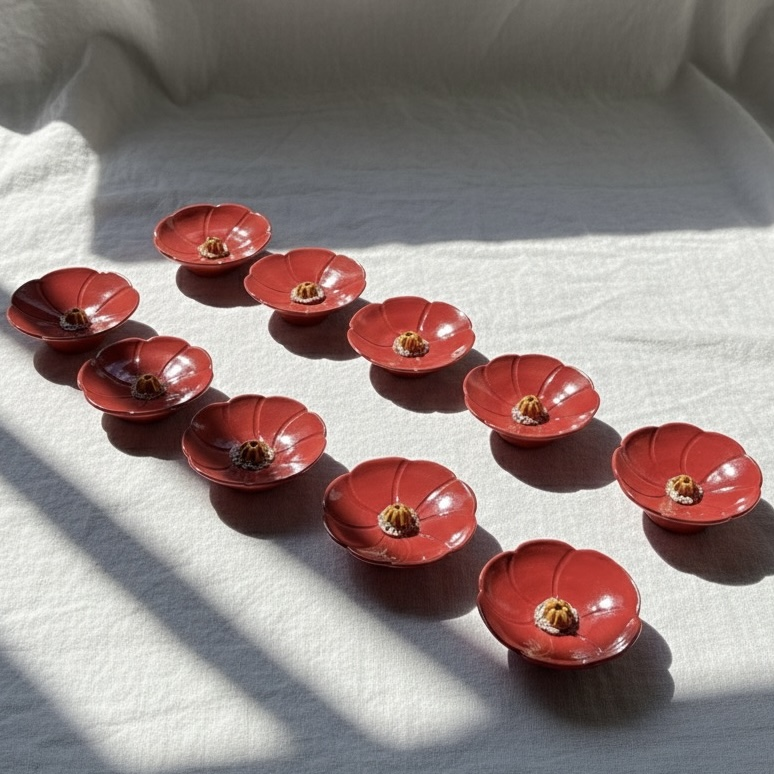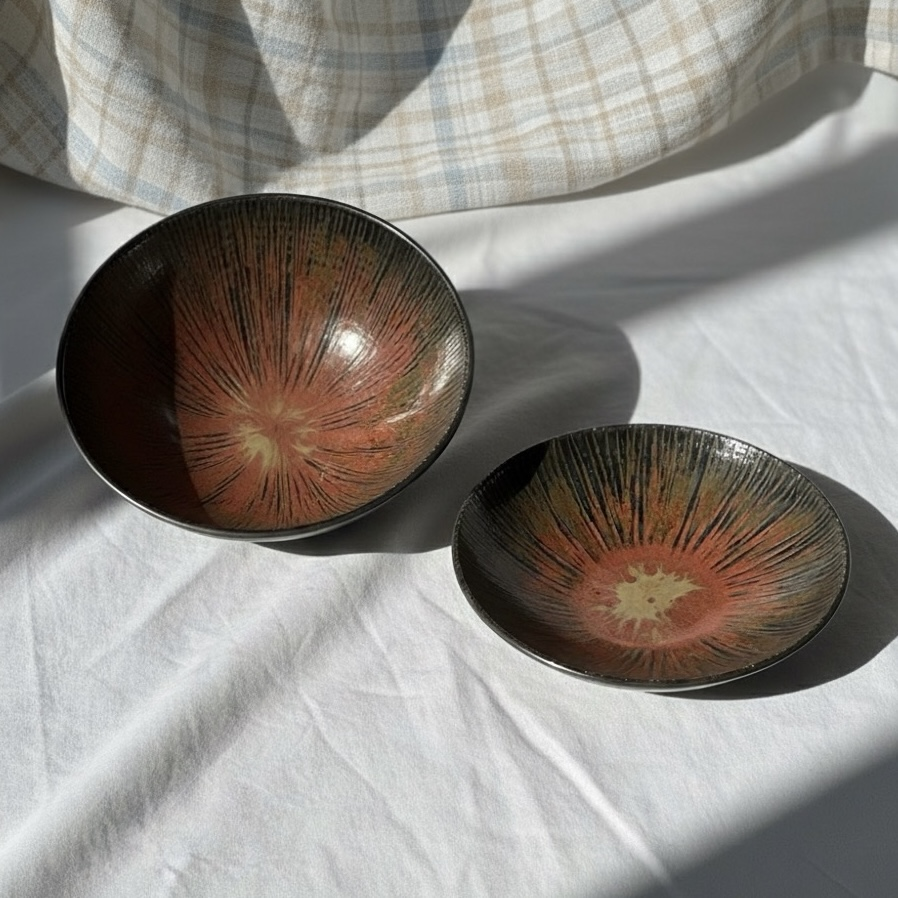The Journey of the Camellia

Chapter 1: The Waking
I centred the clay, pressing down with my palms until the tremor ceased. Then, the lift. The first few pulls were dedicated to the foot—a simple, strong foundation for the blossoming piece above. My thumbs found their place, opening the vessel not upward into a cup, but outward into a wide, shallow bowl. It was a saucer, waiting for its flower. I trimmed the rim, ensuring it had the gentle scallop that hinted at petals, and then, the work of the hands truly began. I took a simple wooden tool and etched the lines, pulling them from the centre to the edge, creating the gentle, concave ridges that would later capture the light and mimic the delicate folding of a Camellia’s petals.
The centre needed a heart. I sculpted the pistil—a tiny, textured mound of clay—separately. It was an intricate thing, poked and prodded with a needle to create the porous texture that would later serve as the stick holder, allowing the incense to perch securely. I scored the bowl's centre and the bottom of the pistil with crosshatches, adding a touch of watery slip as glue, and gently pressed the two pieces together.
The result was a wet, vulnerable bloom (as seen in the first firing)—a perfect, fresh-cut flower, soft and fragile on its little pedestal foot. I laid it on a shelf to dry, a process called leather-hard, where the moisture retreats, leaving the form firm enough to handle but too delicate to rush.
The first fresh batch of Camellias.
Chapter 2: The First Fire
Once completely bone dry—a state we call greenware—it was time for the first heat. I stacked the Camellias carefully in the kiln, nestled side-by-side like a bouquet. For hours, the electric coil hummed, reaching temperatures of nearly Cone 08. This bisque firing transforms the fragile clay into permanent ceramic, strong enough to survive the glaze.
When the kiln cooled and the door opened, the Camellia had a new strength, a faint, terracotta blush, but it was still thirsty, waiting for its true colour.
Stacking camellias for its first firing (shelf 1)
Stacking camellias for its first firing (shelf 2)
Chapter 3: The Blood Red Glaze
This is the ritual that defines the piece. The Camellia is known for its bold, deep red. The glaze I chose—a bright, saturated crimson—was inspired by the Japanese Tsubaki, often associated with destiny and passion.
I mixed the glaze until it was the perfect consistency, thick like cream. I dipped each holder quickly and smoothly, pulling it out with a decisive lift, letting the excess drip away. The glaze felt cold and chalky, turning the piece a dull, dusty pink. I left the inner pistil bare, knowing the natural colour of the red clay would shift to a toasted tan in the heat, creating a perfect contrast to the bright red petals.
This pink shell was an act of faith. I had to trust that the chemicals within the glaze—the silica, the alumina, and the precious metallic oxides—would melt into liquid glass and reveal the true red I saw in my mind.
Glazed Camellias waiting to go in for glaze firing.
Chapter 4: The Transformation
The second firing, the glaze firing, is the final test, reaching soaring temperatures of Cone 4. I loaded them one last time, ensuring no holder touched another, or the molten glaze would fuse them forever.
The journey within the kiln is solitary and violent. The high heat seals the clay’s pores, liquifies the glaze, and then slowly allows it to cool and harden into a smooth, glossy surface. This is where the magic happens, where the dusty pink transforms into that deep, blood-red sheen, reflecting the kiln’s fire back as polished beauty.
When the kiln opened for the final time, the Camellias were perfect. They had survived the centering, the shaping, the assembly, and the two great heats. They were no longer clay, but permanent vessels—ready to hold the delicate smoke of incense, turning a simple ritual into a moment of quiet, enduring beauty.
Fully bloomed Camellias in the sun.
A Camellia incense holder on display.

